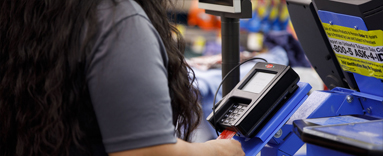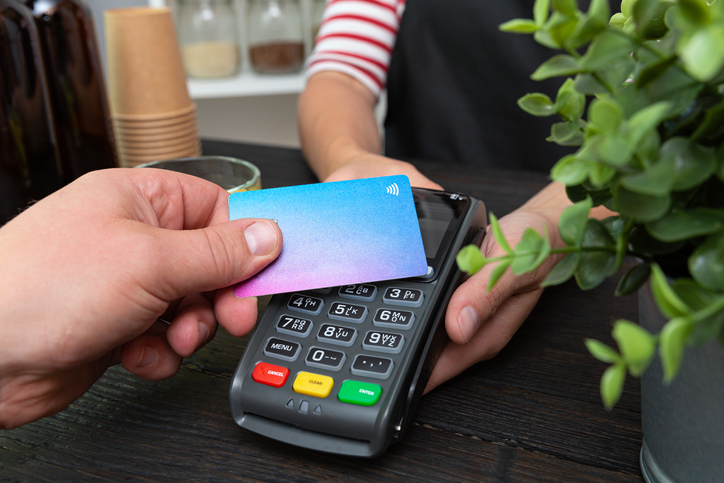March marked one year since the first lockdown in the UK and the start of one of the most challenging yet disruptive years for the retail sector. Retailers have experienced one of the biggest shake-ups in history, with many left attempting to navigate their way through the path of transformation. For some, this meant shifting operations to e-commerce to mitigate financial harm, while brick-and-mortar retail stores had no option but to close their doors entirely.
Both scenarios forced a change in consumer habits. Last year, as the payments ecosystem expanded and digital payments surged, e-commerce reached an estimated $794.50 billion in 2020. Vince Graziani from IDEX Biometrics explores this further.
Adapt to survive: reimaging the traditional high street
Although the change in consumer habits was brought on by the effects of the pandemic, it will cause a shake-up of preferences that will be felt by retailers long after. This will have lasting impacts on the shape of our retail sector. It would be easy to assume that COVID has finally killed the shopping mall, but many retail experts remain optimistic and the government has given a cash injection to restore some struggling stores. However, even ‘retail guru’ Mary Portas has argued that retailers need to evolve and change the high-street experience completely if they are to avoid the same fate as Topshop and Debenhams.
Rather than a demise of the high street, the pandemic looks set to force change once again towards more experiential retail practices that prioritise hassle-free shopping in a high-hygiene environment.
Pandemic leading the way for touch-free shopping experiences
With the potential for viruses to live on surfaces such as handles, hangers and touchscreens, touch-free innovative shopping experiences are essential to pave the way forward for brick-and-mortar retailers.
Finding creative ways to help people shop will be the way that high-street retail innovates for years to come – and it will all be touch-free. Although these immersive experiences are being trialled now, iterations are happening quickly which is setting the trajectory for retailers.
Data-driven personalisation and artificial intelligence are likely to be game-changing innovations, blending the physical and digital shopping experience. Think gamification and storytelling with customised apps that reveal exclusive content about products or items of clothing to create an immersive physical experience. The ability to make reservations for a more intimate and safe physical shopping experience is another approach.
The payment revolution
But there is another aspect of the touch-free shopping experience that has advanced even more rapidly: the in-store check-out process. Since the COVID outbreak, ‘proximity payments’ – contactless or mobile forms of payment – have increased by 18.9% to accommodate pandemic-driven demand.
Retailers and the payments industry were already headed this way, but, according to Business Insider research, the pandemic has advanced the digitalisation of payments by two to three years. With these changes to the digital payments landscape consumers will become used to making fast, contactless card payments and begin to demand a faster, smarter and better way to pay to improve their retail experience.
In response, the payments ecosystem has expanded significantly in the last year, advancing to include biometric payments, such as the newly released Amazon One, which allows consumers to pay using a palm scanning device linked to a payment card in Amazon’s ‘staff-less stores’.
We’ve also seen facial payment methods roll out in China – where Ant Group’s Alipay has introduced the ability to ‘pay with a smile’ through a facial recognition self-order platform. However, there the payment technology has largely failed to gain popularity, predominantly because of concerns about how personal data will be used or stored.
Growing security concerns
This acceleration of digital payments has deepened worries across the board about the use of personal data and risks involved and, as a result, payment security has been raised higher up the consumer agenda. Whilst minimising contact and queues, the palm scanner doesn’t remove the security issues completely as payment data is still stored on Amazon’s cloud which carries a potential risk of a data breach. As a result, we may see a reluctance from consumers to hand over their data to big corporations.
Similarly, whilst contactless card and mobile wallet payments were designed to make our lives easier, the spending limits enforced to make them secure have been a source of frustration in the pandemic. The contactless limit has already risen to £45 in the UK in 2020, and there is speculation the spend limit could be increased again to £100. Some banks in the US have already raised contactless limits to the full credit limit of the card. Obviously, these changes are to the detriment of security.
So, it’s clear that consumers need a new form of touch-free payment that is secure, convenient, safe and personal.
Combining convenience and security in biometric payment cards
This is where fingerprint biometric payment cards can play a pivotal role. To deliver a high-hygiene-and-high-security high street, the payments industry must look to integrate biometric fingerprint sensors into familiar payment cards to authenticate payments. This in-card sensor need only be touched by the user of the card, making it hygienic while linking the person to their payment data. Biometric cards, therefore, address the health concerns of today’s coronavirus-conscious consumers without compromising data security.
Importantly, upon registration, an abstract biometric template is stored in the secure element of the card and never leaves the device. Such technology provides all the security that biometrics promises, without the threat of personal data being breached – also removing the incentive for theft or misuse.
With lockdown restrictions easing and as the high street begins to re-open again, the contactless payment debate around hygiene, convenience and security will continue to press on. Over the next few months, consumer health concerns will remain a high priority for not only the retail industry but also for other industries too.
The COVID-19 pandemic, despite the overall economic impact, has provided new opportunities for retailers wishing to embrace change. To survive economic downturns, retailers need to innovate the customer experience to reflect current demands will succeed.
This article was originally published by Vince Graziani, finance-monthly.com.










